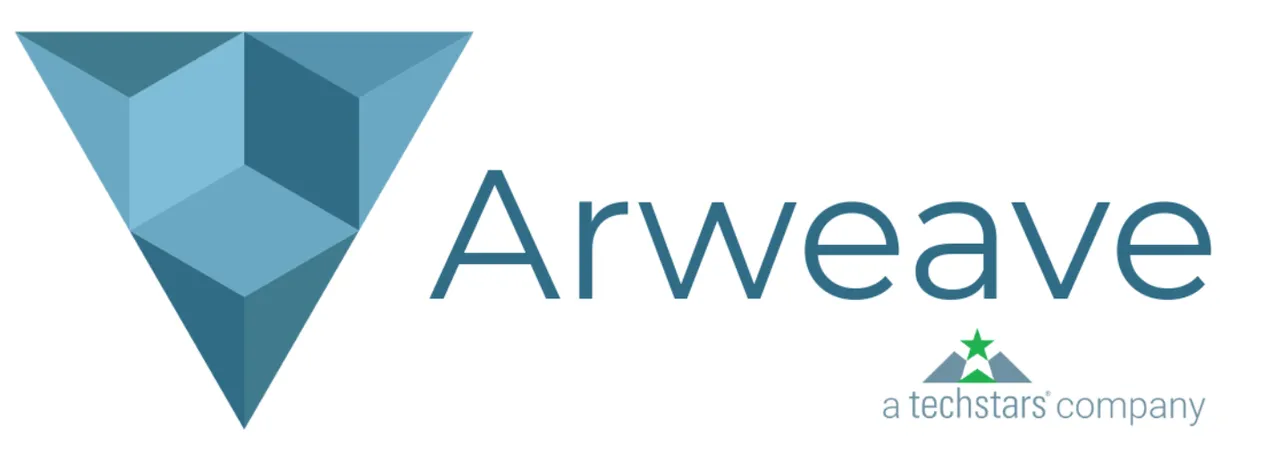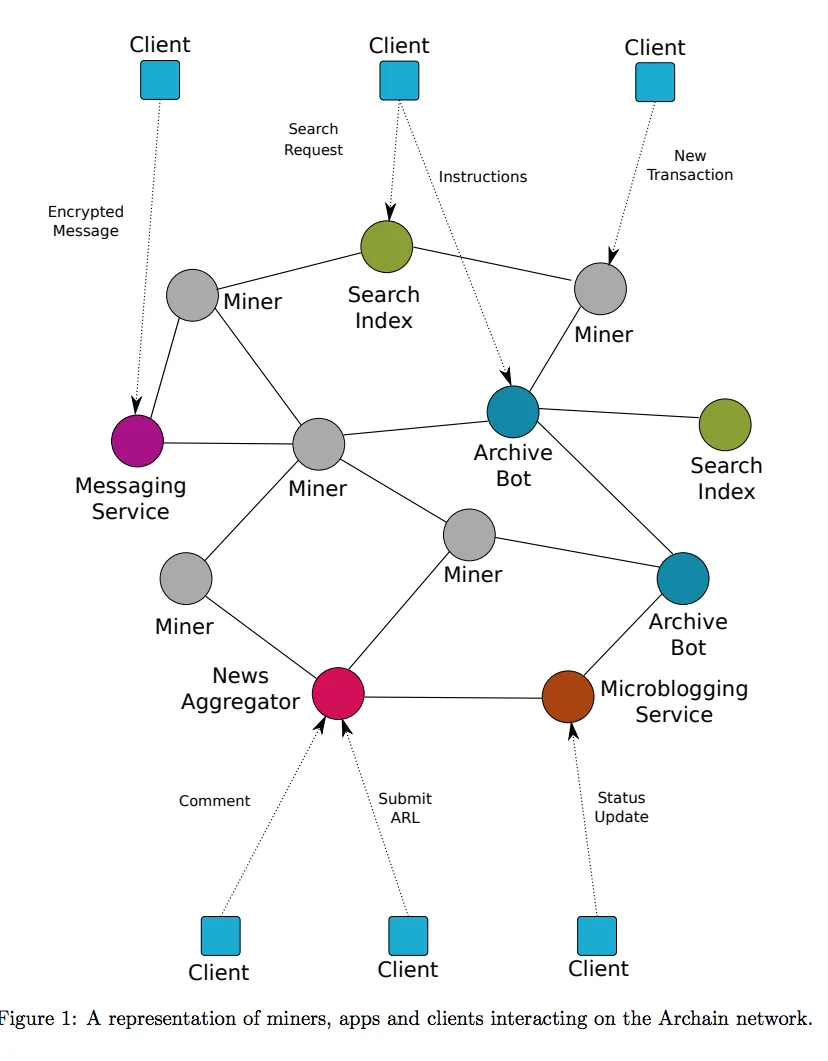
Hardcap:$8.7 M
Token Symbol: AR
Total Supply: 66 M
Website: https://www.arweave.org
Lightpaper: https://www.arweave.org/files/arweave-lightpaper.pdf
Telegram: https://t.me/arweave
What is Arweave?
- A decentralised, scalable, permanent data storage platform that uses proof of access as its consensus
Sister network of the internet that provides a low cost, permanent cryptographically verified archive storage
Architecture
- A platform that has a novel blockweave structure which is available for developers to build applications on

- Using a blockchain- like structure, it allows a scalable on chain data storage in an effecient manner
Features
Blockweave
- A novel distributed ledger that allows nodes to fullfill key network functions (become full nodes) without possessing a whole copy of the blockchain
- It comprises of two components which are both synchronised by network:
1.)Wallet list- record of all the active wallets in the system.
2.) Block hash list- record of all the hashes from all the previous blocks
- Uses "on going verification" system where wallet lists and block hashes are continuously verified through the ongoing progress of each block
- Wallet list and block hash are available to download so new nodes can participate in mining the weave almost in an instant
- New miners are able to retrieve the blockhash and wallet lists from the current block and start mining or they can do full weave verification
- The hash of the blockhash list is distributed to every new block to prevent recall block forging attacks

Illustration of blockweave structure showing the creation of the next block by incorporating hash from current block and the data of a randomly picked "recall block"
Proof of Access
- New base consensus (POA) integrated with POW mechanism
- POA incorporates data from a randomly chosen previous block, Recall block, to create the next block
- Recall block is chosen by taking the hash of the current block and calculating its modulus with respect to the current block height
- Miners do not need to store all the blocks forming the blockchain but they are incentivised (by POA and wildfire) to store data of previous blocks in case it randomly gets pick as a recall block
- As the number of redundant copies of the block lowers, the incentive to keep that block increases - there will be less competition fighting over the next block if that copy of the block gets recalled.
Wildfire
- An incentive layer to encourage miners to share data freely
- Creates a ranking system local to neighbouring nodes
- Ranking depends on how quickly new blocks and transactions are distributed to peers, based on how quickly they respond to requests and accept data from others
- Peers are served according to their ranks with poorly ranked peers being blacklisted from the network - incentivises miners to stay well in position of each other's ranking so they can spend the largest amount of time efficiently mining

Blockshadows
- New technology that minimises waste of data and allowing fast block consensus as well as a large TPS
- System that partially decouples transaction distribution from blocks which allows only "shadows" of the block to be moved around the system
- Blockshadows specifically contain a hash of the wallet list and hash list rather than the full block itself - this information is enough for a node to reconstruct the block from its constituent transactions
- This results in fast distribution of blocks across the network with a theoretical limit of 5000 tps on a 100 mbps network
Problem They Solve
On chain storage restrictions
- The amount of hashing needed for consensus decreases as the amount of stored data increases, resulting in low fees
Unsustainable Mining
- Nodes are not required to have full copy of the entire blockchain to mine-with more nodes being able to mine, it would lead to a more decentralised network.
Complicated Consensus Mechanisms
- As the amount of the data stored increases, it will become unsustainable for a miner to store the entire weave — The difficulty of the PoW part of the PoA algorithm will decrease, maintaining a consistent the block time but consuming significantly less electricity, at a network level
Uses
- Decentralized Document Storage
- Document Authentication
- Permanent Immutable Data Distribution
Token Allocation
- Total supply of 66 M: 11 M mining and 55 M for genesis
- £0.44 per token for private sale and £0.55 per token for the crowd sale
- No lock up for private investors
- The tokens for the founders and project are vested at 20% per year over 5 years
Advantages
- Low Hardcap
- Very hyped up ICO with 30k telegram members and 3k followers on twitter
- provides innovative solution for permanent data storage solutions at lower costs
- plans to charge only the initial fee for storage rather than monthly subscription fees or fees based on data size for the storage of data
- PoA combined with PoW lowers electricity cost which has positive outcomes on environmental scaleablity of the system
- PoA also allows more users to become miners leading to a more decentralized network
dual function — platform for DApps and immutable data storage - Flexible in types of applications they support — Devs are able to build their own apps through a REST API which means any type of application (Web or native) can be written in any programming language (Java, Javascript, C++) and communicate with the Arweave using HTTP. Another option would be creating apps that live on the weave itself.
Comparison and Competition
Lightstreams
- Lightstreams is a permissioned decentralized storage system while arweave is permissionless
- Lightstreams uses proof of authority as consensus while arweave uses proof of access with proof of work mechanisms
- Proof of authority mechanism restrains exchange from having a lot of nodes
- Arweave incentivises nodes to store data
Siacoin/ Filecoin
- Storage in arweave is not based on the renting storage model like in sia coin/filecoin
- Arweave does not support smart contracts
- Arweave incetivises storage of old data by making it necessary requiremnt for mining new blocks — provides better prices for long term file storage
- You only have to pay once in arweave for storage whereas you have to pay storage and retrieval in filecoin
- Arweave’s data are all stored on chain
Bluezelle
- both are used as database storage
- Bluezelle uses swarm technology to manage data storage
- In bluezelle- miners “stake” their money as collateral form of incentive for them to guarantee reliability.
- Arweave’s data are all stored on chain
- You only have to pay once in arweave for storage
Team


Partners

Conclusion
Arweave has built a novel block storage and mining alogarithm that can pave way in combatting censorship and ineffecient expensive current data storage. Although the team are mostly fresh graduates, the project already showcase an active github. Like any other ICO, the competition in the space is fierce and arweave is not alone. But what sets it aside from Siacoin, Filecoin, and lightstreams is their unique technological architecture that provides a solution that many storage provider have failed to deliver. This project focuses on permanent, on chain data and file storage with users only having to pay only once! However, no detailed token metrics and roadmaps are provided as of now. But it should be noted with the lack in their marketing strategy, they still showcased a high investor demands. Their main net launch which will happen next week will be a determining factor just right before the start of the crowdsale!